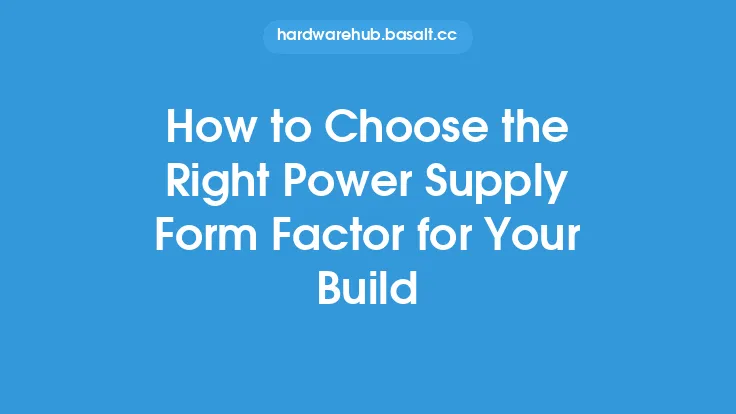When it comes to selecting a power supply for your electronic device or system, there are several factors to consider. One of the most critical aspects is the protection features that the power supply offers. A power supply with appropriate protection features can ensure the safety and reliability of your device, prevent damage from power-related issues, and even prolong its lifespan. In this article, we will delve into the world of power supply protection features and provide you with the knowledge to choose the right power supply for your needs.
Introduction to Power Supply Protection Features
Power supply protection features are designed to prevent damage to the power supply and the connected device from various power-related issues. These features can include overvoltage protection, overcurrent protection, short circuit protection, undervoltage protection, surge protection, crowbar protection, and overtemperature protection. Each of these features plays a crucial role in ensuring the safe and efficient operation of the power supply and the connected device. When selecting a power supply, it is essential to consider the specific protection features that are required for your application.
Types of Power Supply Protection Features
There are several types of power supply protection features, each designed to address a specific power-related issue. Overvoltage protection, for example, prevents damage from high voltage spikes or surges, while overcurrent protection prevents damage from excessive current draw. Short circuit protection, on the other hand, prevents damage from short circuits, which can occur when there is an unintended path of electricity between two or more components. Undervoltage protection prevents damage from low voltage levels, which can cause the power supply to malfunction or shut down. Surge protection prevents damage from high-energy surges, which can occur during power-on or power-off cycles. Crowbar protection is a type of overvoltage protection that uses a crowbar circuit to clamp the output voltage to a safe level in the event of an overvoltage condition. Overtemperature protection prevents damage from high temperatures, which can cause the power supply to malfunction or shut down.
Selecting the Right Power Supply with Appropriate Protection Features
When selecting a power supply, it is essential to consider the specific protection features that are required for your application. The first step is to determine the power requirements of your device, including the voltage, current, and power rating. Next, consider the environmental conditions in which the power supply will operate, including temperature, humidity, and exposure to power surges or spikes. Based on these factors, you can select a power supply with the appropriate protection features. For example, if your device requires a high level of overvoltage protection, you may want to select a power supply with a built-in overvoltage protection circuit. If your device is exposed to high temperatures, you may want to select a power supply with overtemperature protection.
Technical Considerations
When selecting a power supply with appropriate protection features, there are several technical considerations to keep in mind. One of the most critical factors is the power supply's ability to handle power surges and spikes. This is typically measured by the power supply's surge withstand capability, which is expressed in terms of the maximum voltage and current that the power supply can withstand without damage. Another important factor is the power supply's response time to power-related issues, such as overvoltage or overcurrent conditions. A power supply with a fast response time can prevent damage to the connected device by quickly responding to power-related issues. Additionally, consider the power supply's efficiency, which can affect its ability to operate reliably and efficiently.
Industry Standards and Certifications
When selecting a power supply with appropriate protection features, it is essential to consider industry standards and certifications. One of the most widely recognized standards is the UL (Underwriters Laboratories) standard, which provides a framework for evaluating the safety and performance of power supplies. Other important standards include the IEC (International Electrotechnical Commission) standard and the EN (European Standard) standard. Additionally, consider certifications such as the CE (Conformité Européene) mark, which indicates that the power supply complies with European Union safety and performance standards.
Conclusion
In conclusion, selecting the right power supply with appropriate protection features is critical to ensuring the safety and reliability of your electronic device or system. By considering the specific protection features required for your application, technical considerations, and industry standards and certifications, you can choose a power supply that meets your needs and provides reliable and efficient operation. Remember to always consult the manufacturer's documentation and specifications to ensure that the power supply you select meets your requirements. With the right power supply and protection features, you can ensure the safe and efficient operation of your device and prevent damage from power-related issues.





